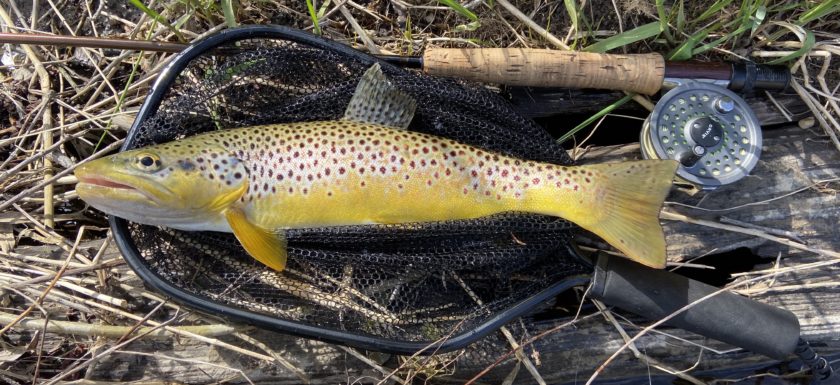
Fly Fishing, I was once told by a veteran fly shop owner, is the most written about outdoor sporting topic in the world. There has been and continues to be volumes written and published about the sport, both technical and philosophical in nature. Presentation of the fly is a common theme that stands out in most all the technical literature. This is for good reason. The ability of the fly caster to present the fly properly determines their success as a fly fisher.
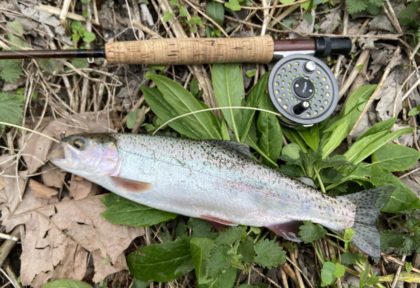
Presentation of the fly is a multi-faceted topic. It is a most important skill for fly fishing rivers, small stream, lakes, oceans…Everywhere. Fly presentation is the skill that separates fly fishing from all other forms of fishing. It is the defining characteristic of what fly casters do that those that do not fly fish sometimes struggle to understand.
In the modern day art of fly fishing there are a variety of techniques defined and developed. Dry fly fishing is perhaps the most popular and where fine presentation of a fly is needed at the highest skill level. Then there is wet fly, nymphing and streamer fishing. Where presentation of the fly to the fish is also detailed and tedious, yet not often as refined as in dry fly fishing.
Presentation of a fly to a rising trout, to a trout you can see, is much more tactical than the presentation of a fly to an un-seen fish, or during blind casting. Blind casting is a technique where fly presentation is important, but overlooked. And when we find ourselves blind casting we are just going through motions with an expected result that often does not happen. Blind casting, is however a technique that is the most prevalent. It is done with dry flies but is the technique when fishing subsurface nymphs on stillwaters and big rivers.
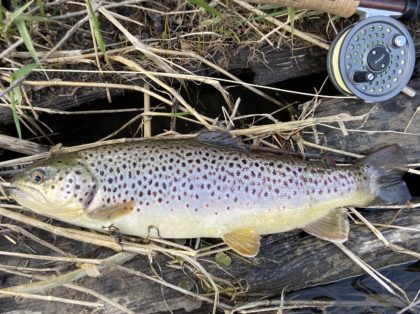
The presentation of a fly begins the moment we begin to cast. The moment we strip line off the reel and eyeball the water in front of us. The largest trout in a run or hole is most readily caught on the first or second cast. The first or second presentation of the fly. This determines how the water is to be approached and at which angle and in which manner the angler approaches to deliver the fly in a natural manner and with an element of surprise.
Many expert fly fishers define presentation of a fly as how the fly is delivered. More of a casting topic than a study of how the fish is approached. But how we approach the water we intend to fish is the first and often most vital aspect of the presentation of our fly. Wether it is a rising trout we can see or just a stretch of water we are certain holds a big fish. How you approach often is the difference between a big trout brought to net or not.
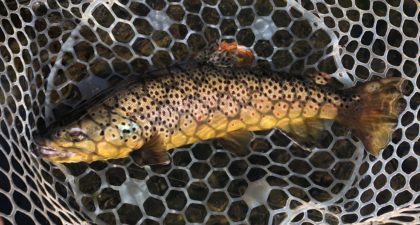
A friend of mine who builds fly rods said to me that he does not want to know anything more about nymphing. He has read and seen enough and there is nothing new in the topic to interest him. I partly agreed at the time but thought about it much later. His comment is spurred, I’m pretty sure, by the new era of contact nymphing techniques that the younger generation of fly fishers are whole-heartedly embracing. He and I are getting old and new things scare us.
These new techniques require aggressive presentations, specialized rods, unique lines and proprietary leaders. The technique and equipment leans, it seems, away from what many of us older fly fishers think of as fly fishing, delving into an entirely different arena. A group of techniques that are called nymphing but straddle the line of what is fly fishing.
Also, you have to have very expensive sling packs in designer camo cinched over your shoulder accompanied by a straight brimmed Howler Bros hats on your head. Thats part of the presentation. Deadly effective family of techniques. Euro nymphing. Contact nymphing. Czech Nymophing. I think there is one type they call Italian nymphing? Each of which is the evolution and results of the interesting world of modern day competitive fly fishing.
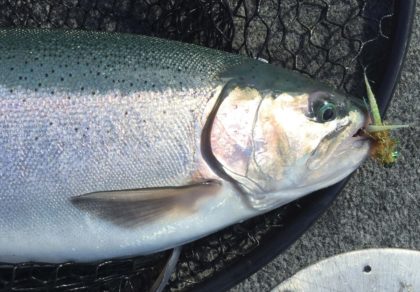
These techniques were developed by European fishermen to win sanctioned fly fishing competitions. The American fly fishers tweaked and fine tuned the techniques for our home waters. They work well in any flow but shine in turbid high and fast waters. The ticking of tungsten nymphs on the bottom of a trout streams is now a staple technique of American fly fishing. Or is it a fad?
Since catching trout on streams is often my job I have began to learn about it. Any technique that is proven successful, such as contact nymphing, must be embraced. It seems to me, that beside the new tapered long rods and other gear the manufacturers have designed and marketed to cash in on the popularity of it, it is essentially, just high sticking a nymph. A technique that is as old and time tested as any other. A guy from Pennsylvania named Humphrey tried to own it in the 80’s by calling it the Leisenring Lift, or something like that.
It is enjoyable but I have to say that 90 percent of my guests are not interested in the technique. Why? Maybe because they are “old school”, like me, and don’t enjoy its process. Snapping weighted flies on thin leaders with no fly line involved attached to 11 to 13 foot rods… It just is not what boomers think of when they think of fly fishing.
The presentation of the fly, in contact nymphing, is crude. But subtle too, I will admit. And I know many 20 and 30 something fly fishers who would laugh at my slight disdain of the technique. It just doesn’t do anything for me or most of my guests in the enjoyment aspect of the sport. Each and every time I have stepped into a trout stream or river it was to escape, relax or teach. Competition? Thats for the Bassmasters. I catch trout. Maybe not 53 of them in an hour. But enough to make it successful and enjoyable.
Peace
Mike

